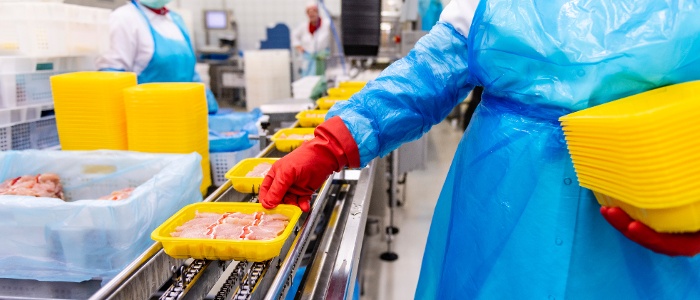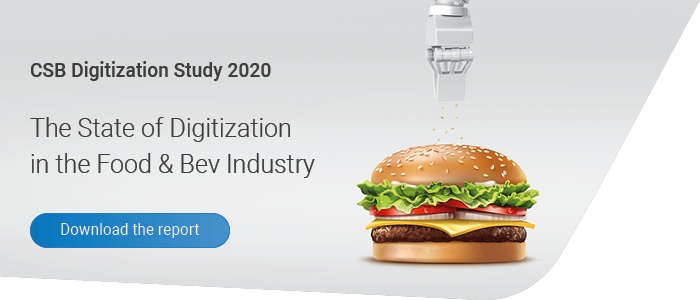The worldwide sales of poultry is booming - however, this success is not automatic to processors. The market conditions are demanding, the processes are complex and the consumers pay particular attention to the price. What producers can do to meet these challenges successfully is visible at visits to the Belgian poultry processor Volys and to Pivka, the Slovenian market leader.
Things are going well for the poultry industry: Whether in Asia, the USA or Europe - the white meat segment has comparably high growth rates in the world market. According to estimates of the Food and Agriculture Organization of the United Nations (FAO), the global production of poultry amounted to approx. 121.6 million tons in 2018. The FAO forecasts a relevant growth for 2019, too. However, if you want to succeed in the market as a producer you must be highly efficient and have a grip on even the smallest cost driver of the low-margin products. In addition, the products have a very short shelf life, which leads to a high process complexity.

Pivka: With ERP and buffer inventory to optimized push-and-pull production
The Slovenian poultry producer Pivka has found answers to the challenges of the industry. Twelve years ago, the company started a comprehensive digitization program due to operational difficulties: At Pivka, there is a time difference of several hours between the slaughter of the animals at 5:00 a.m.in the morning and the processing of the customer orders from 1:00 p.m. The result, extreme peaks and few efficient processes in the production and packing departments.
The solution was a combination of an ERP system and a software-supported buffer inventory to balance perfectly the whole push-and-pull production. Today, per item the processed meat is packed in crates and automatically goes into inventory. At the start of production products are forwarded in accordance with the customer orders and supplied just in time to the lines for packaging and labeling. Central control unit is the inventory management in the ERP system. It ensures that the right raw materials arrive at the right lines. Today, industrial PCs provide maximum transparency at the lines that communicate online with the ERP system and supply all relevant data for order processing to the employees. In return, all data originating in production are transferred directly into the ERP system. It is this real-time data flow that enables the managers to keep track of the activities: All important factors like inventory consumption or production quantities are available at the push of a button.
A production fit for growth
Pivka can face the competition even better due to the digitized processes. The whole organization has become faster and is significantly more cost-efficient today than some years ago. Especially with the interaction between ERP system, buffer inventory and data entry points in production helps to complete the orders with a lot less stress. Pivka can now fulfill the wishes of its customers in terms of availability and freshness due to the improved alignment of information on inventory, capacity and demand.
The key performance indicators also show the positive effects. Production increased by approximately 40 percent. With annual sales of 38 million Euro, Pivka has become the number 2 on the Slowenian poultry market. Nevertheless, managing director Janez Rebec sees no reason to sit back. For him, the digitization of the company is an ongoing process: “We have been growing twice as much as before.”
Volys Star with high delivery accuracy
Like Pivka, the Belgian producer Volys relies on digitized processes in order to meet the difficulties of the market. At the facility in Lendelede, Volys Star manufactures sausages, breaded and frozen products as well as goods for the restaurant industry, which are sold worldwide. Since the installation of the first CSB module, the high-performance business has developed very well. By now, production and picking volumes have doubled.
In some areas, Volys has already become a paperless factory. In picking, for example, everything works via mobile devices, picking notes have not been used for a long time. In order to fulfill any individual wish in customer-specific labeling, Volys uses information cockpits at the lines. In total, 500 different labeling layouts are in use, representing a challenge for the employees. “Due to visualization, our employees are supported in an optimal way. In the case of an error, the system immediately issues an error message. Wrong labels and faulty allocations of products to customer orders are ruled out,” Werbrouck is pleased to report. The result of this digital optimization: Delivery precision has improved considerably.
Smart technologies offer new opportunities
Pivka and Volys demonstrate, how you become more successful in a demanding sector through digital optimization tools. They enable poultry processors to achieve end-to-end planning and control from stall to delivery at the customers, to respond flexibly to market developments, price fluctuations and consumer wishes, to reduce costs and to achieve optimum use of sales opportunities.
The consistent and comprehensive use of smart IT solutions and the corresponding design of processes in production and logistics are therefore among the most important measures to safeguard long-term profitability and competitiveness in the poultry-processing food industry.
Many successful producers have already taken this path. Plukon Poultry (Netherlands), Kneuss (Switzerland), Rossdown Natural Farms (Canada), Cherkizowo (Russia), Kekava (Lithuania) or Almarai (Saudi Arabia): They all use digital tools, control stations, planning and simulation modules to fulfill 100 percent of their customers' requests and even produce small orders economically.
We have made a detailed white paper on the concrete opportunities. You can download it here.


